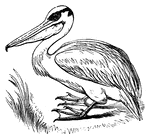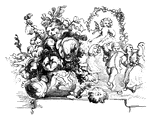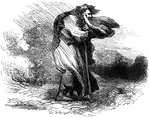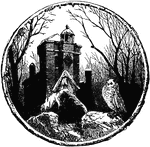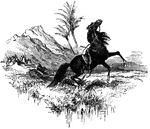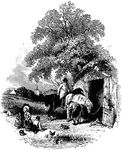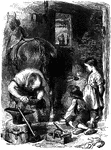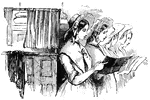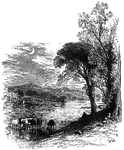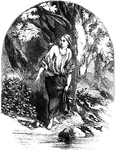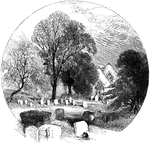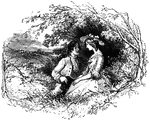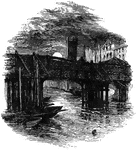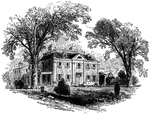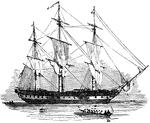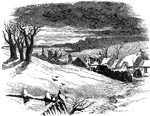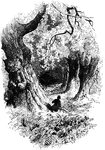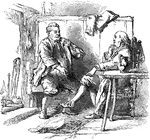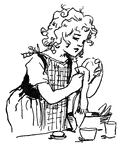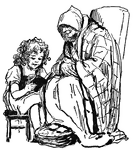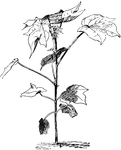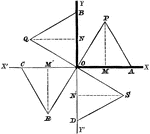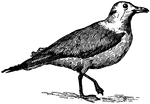
Kittiwake Gull
The Kittiwake gull (Rissa tridactyla) is a sea-gull characterized by the absence of the hind toe. It…

Lamium Album
Lamium album (also known as the white dead-nettle, or archangel) is a member of the Lamium, a genus…

Land Crab
The land crab is a member of the family 'Gecarcinidae', and is remarkable for the curious modification…
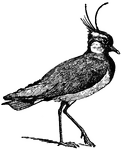
Lapwing (or Peewit)
A handsome plover-like bird of Northern Europe and Asia (Vanellus cristatus), also known in Great Britain…
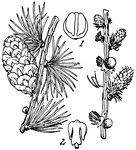
Larch, Cone and Flowers (male and female)
Larch, or Larix, is a genus of hardy, deciduous, coniferous trees of very graceful habit. They bear…
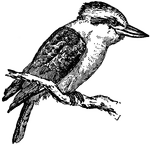
Kingfisher, Dacelo gigas
The Settler's Clock ('Dacelo gigs'), is a very large kingfisher found in Australia, where it receives…

Human Leg (Front View), and Comparative Diagrams showing Modifications of the Leg
This illustration shows a human leg (front view), and comparative diagrams showing modifications of…

Leg of Bear
This illustration shows the plantigrade leg of a bear. Plantigrade means that the animal walks flat…

Ring-tailed Lemur
A familiar example of the true lemur, the Ring-Tailed Lemur (Lemur catta) , or 'Madagascar cat', is…

Leopard
The leopard (Felis pardus) is a carnivore closely allied to the lion and the tiger, but differing it…
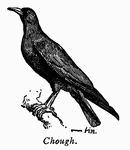
Chough
Chough, a European crow with a glossy black color, with bill, legs and feet a bright cherry red.
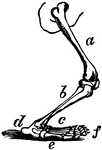
Polar Bear Leg
The polar bear, Plantigrada, is part of the subdivision Carnivora, which includes other carnivorous…

Polar Bear Leg
The anatomy of a polar bear's leg. a, femur (thigh); b, tibia (leg); c, tarsus and metatarsus (foot);…
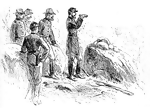
Little Round Top
A war council at the top of Little Round Top in Gettysburg, Pennsylvania. It was the site where the…
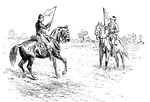
Flag of Truce
Civil War soldiers waving the flag of truce, signaling a halt in fighting for both sides.
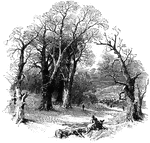
Trees in the Winter
Bare trees during either the winter or fall. They are in an open valley where people are standing.
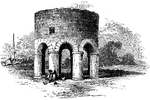
Newport Tower
The Newport Tower (also known as: Round Tower, Touro Tower, Newport Stone Tower and Old Stone Mill)…
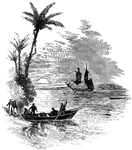
Landing on an Island
People in a boat landing on an island while the main ship stands along on the ocean during a sunset.
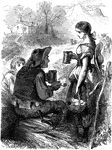
Old Man with Young Woman
An old man resting on a log and conversing with a young woman. Sitting next to the man is a small child.…
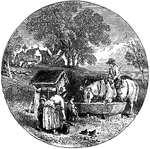
Horse Drinking
A horse drinking from a trough next to a well. An old woman is tending to the chickens and children.

Old Sailboat
One of a fleet of sailing vessels. Smaller boats are seen either coming from or going to the ship.
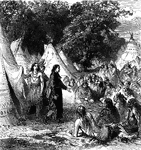
Missionary Addressing Native Americans
A missionary in a long black robe addresses a group of seated Native Americans. The setting is a collection…
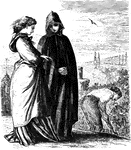
Woman in Black
A woman talking to another woman dressed in black, possibly for mourning. A third figure digs in the…

Corn Plant
Corn plants with the surface of the soil "laying by" in accordance to the Williamson Plan.

Plows for Sweet Potato Harvesting
Plows used to dig sweet potatoes. "The long vines must be first disposed of. They are usually pulled…
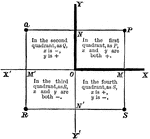
Coordinate Plane
A coordinate planes with the quadrants labeled showing which value (x or y) is positive or negative.

Testing Thickness
Testing thickness of flanges with universal dial indicator. The indicator A clamped to rod B is set…

Jesus Cures an Epileptic Boy
"And when they were come to the multitude, there came to him a man, kneeling to him, saying, Lord, have…
